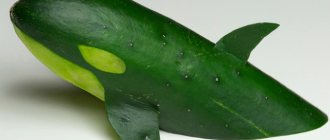Decor
Pay attention to detail. As a rule, it is the little things that destroy the integrity of the picture. But they are easy to hide or decorate in Japanese style. We offer design ideas that will transform the interior of your home:
- get rid of unnecessary things as much as possible - minimalism is a priority. Hide bulky cabinets with imitation Japanese-style fabric/wallpaper screens. You can do without a frame by gluing strips of wallpaper with an accordion;
Make a “banner” for a photo - glue photo wallpaper onto the base. You can have different ones on both sides, you get two versions of the photo zone. If you find a photo wallpaper depicting geishas, you can make a tantamaresque.
- if the curtains do not fit, remove them and attach garlands/beads of different lengths to the curtain rod . Place any of the attributes listed below on the windowsill. Cover the glass windows with Japanese-style landscapes on translucent paper. Party guests will truly feel transported to the other side of the world!
- change the shades on chandeliers/lamps . It won’t take much time, and a Japanese-style themed party will certainly be remembered by your friends for its magnificent interior design. Use paper - with a pattern or draw a pattern yourself (plants, hieroglyphs, animals). For the frame - wire, wooden sticks (there are many simple MKs on the Internet);
- hang painted fans, engravings, paintings on the walls - Japanese painting is recognizable and will instantly create the right atmosphere. Sakura branches, bamboo, pine trees, bright chrysanthemums and delicate lotuses, pagodas and picturesque landscapes, religious motifs. Sacred birds and animals - storks, pheasants, cranes, turtles, sika deer.
All of the above are symbols of the Land of the Rising Sun. Use them everywhere: appliques, figures, compositions, on dishes, etc. It is better to print images on slightly yellowish “aged” paper. Some paintings can be supplemented with sayings of sages, thoughtful haiku.
- A Japanese-style party cannot be complete without floral decorations . Liven up the interior by placing coniferous bonsai and bright ikebana plants around the house/hall. Make miniature compositions - a garden of rocks, moss (it's easy, the MK is online). Place artificial bamboo, sakura branches, and live chrysanthemums in stylized vases;
- organize a mini-pond in a wide flowerpot - algae, water lilies, lotuses (live or artificial), pebbles. Throw multi-colored goldfish into it (you can print it out, wrap it with tape and secure it to a thin wire). Pour water into small bowls, place pebbles, flower petals and candles. A mini fountain, an aquarium, an underwater garden will fit in (can be made in beautiful jars);
- hang lush paper garlands, lanterns, miniature umbrellas, cranes, etc. decorations using the origami and kirigami techniques are recognizable, colorful paraphernalia in the Japanese style, bringing a festive mood to the interior.
If you are organizing a party for children, the last point will be enough - kids are unlikely to appreciate other ideas. They are much more interested in competitions, games and treats.
Entertainment
Start acting out the Japanese party scenario right from the door, greeting guests with a slight bow and the traditional Kombanwa - good evening, Konnichiwa - good afternoon, Yahho - hello. Japanese-style music playing in the background will speed up your immersion in the topic.
The Japanese music market ranks second after the United States! Folk music, Japanese jazz (which is popular even in America), pop, noise, rock and much more. It won’t be difficult to choose something to suit the tastes of any company.
If you are having a sushi-party or a party for children, any fun competitions will do - dance competitions, relay races, alcohol competitions . Modern Japanese youth relax noisily, without any ceremony or embarrassment. Our options are suitable for those who want to build a more traditional Japanese-style party scenario. Although you can combine both options, diluting ordinary competitions with “stylized” entertainment.
Osoji
The beginning of the scenario is literally a big cleaning before the holiday. Visually divide the floor into two parts, scatter “garbage” - balloons, crumpled newspapers. Hand out brooms and mops to guests. The goal is to throw “garbage” to the opponents’ side (two teams). Very funny! The competition lasts a minute, after which the host evaluates which side has the least trash (they win).
Feed the crane
Pair competition (if there aren’t enough guys at the party, let your girlfriends feed each other - there are probably the weaker sex among the red-crowned cranes). It's a race to see who can handle it first. Green grapes as frogs, 10 per pair. We will feed him with chopsticks from a cup.
Light sumo
The competition is more for guys, but you can also include a women’s “league” (you just have to take off your shoes so as not to break your heel). For laughter, tie large pillows to your bellies. The goal is to push the opponent out of the “ring” (mark the boundaries). You can’t put steps, etc., you just have to push – clasping your hands, resting your chest and stomachs against each other.
Taiyuku no hi
If you want active fun, include traditional pentathlon - sports games - in the Japanese party scenario. There are no strict rules, as well as certain disciplines. You can choose any competition to determine the strongest, most accurate, dexterous, etc. Do push-ups, pull dumbbells and girls, overcome obstacles and do relay races, throw darts at a target, etc.
Creative tortures of kabuki
Two or three guests, depending on the plot, go onto the “stage” of the theater. No paraphernalia, everything is depicted with gestures. To the music, they act out a three-minute “drama”, carefully imitating Japanese speech. Friendship will win, hold a vote, or let the hero of the occasion present the bamboo championship. Very funny, especially if the scenes are conflicting (random selection, cards):
- a husband and wife are arguing about where to lay a new rug;
- an employee is fired, but he refuses to leave;
- two friends persuade the geisha to, ahem, do something that is not part of her duties.
Japanese-style table entertainment
- assemble origami, cut out kirigami, draw hieroglyphs at speed (you can use ketchup for a laugh);
- what does this or that gesture mean ? Examples: stick out your tongue and pull down the lower eyelid with your finger (tease, how to show your nose), wave your palm above your head (I'm full of food), clasp your little fingers (oath);
- name an analogue of the Japanese proverb . Examples: even ants destroy dams (water wears away a stone), strangers come to feast, and their own people come to grieve (a friend is known in trouble);
- compose a haiku with the words from the card . Three words: two on topic, one absurd. Example: sakura, pagoda, wig.
Sakura flowers on the pagoda - You can’t take your eyes off, Your wig has slipped.
- play association games (crossword - sudoku, vodka - sake, cheers - banzai, etc.). You can arrange a quiz on your knowledge of the topic: “what flower is depicted on the Japanese passport?” (chrysanthemum), “why is the red-crowned crane so revered?” (due to the red spot on the head, symbolizing the sun), etc.
Let the ending of the script also be in Japanese style. For example, you can throw beans out of the window, cheerfully shouting “Demons away, good luck in the house!” Or launch paper lanterns with wishes into the sky. At the end, clap your hands together 10 times in a 3-3-3-1 rhythm. This is how the Japanese mark the end of a fun, successful party.
Invitations
There are so many things associated with Japan that the choice is almost endless! Write a concise, succinct text. Use a stylized font. A few ideas off the top of my head:
- A fan with hieroglyphs, a sakura branch on the front side and text on the back, presented assembled, tied with braid;
- Paper umbrella, functioning . Only a small one (simple, quick, look on the Internet). Text on the umbrella itself (circular) or on a piece of paper tied to the handle;
- Funny invitations in Japanese style - cards in the shape of a kimono, a slipper, a figure of a sumo wrestler;
- Panel on wooden sticks at the top and bottom, with a ribbon holder . Can be rolled like a scroll;
- Origami – lotus flower, crane, etc. To read the text of the invitation, the origami will need to be unfolded. And to get to the party (entrance is by invitation only) – put it back as it was!
Japanese style party invitations
Invitations for such an exotic party should correspond to the theme of the holiday and fully convey the mood of the guests. They can be made in the form of a regular postcard with images of Japanese paraphernalia or with images of women in kimonos. These can also be small postcards in the form of Japanese umbrellas. With the image of cherry or dragons. Fantasy and once again your fantasy. After all, the holiday begins with an invitation card. In the text of the invitation, be sure to indicate the location and dress code of the event; you can briefly describe the essence of the holiday. Your guests should receive them as early as possible in order to be able to properly prepare.
Photos of invitations
If you are interested, you can find out how to organize a party in Oriental style!
Suits
Suitable clothes can be bought in almost any store - stylized dresses, T-shirts, tunics with drawings, hieroglyphs, and recognizable symbols. And costumes for a Japanese sushi-party are not needed at all - the clothes of modern Japanese are no different from European ones. But if you want everything to be up to par, you’ll have to spend a little more time searching/creating a costume.
Women's clothing (full set) consists of many elements that cannot be called comfortable. Therefore, it is better to limit yourself to a traditional kimono over a short robe, slip or closed underwear. You can wear tight pants under the kimono.
Shoes - light slippers made of bright textiles, sandals, flip-flops (with a fastening like a geta - a strap between the toes, reminiscent of flip-flops). It is better to put your hair up, decorating your hair with kanzashi - an important element of a costume for a Japanese party . Kanzashi (hair ornaments) reflect social status, marital status and should be combined with a kimono.
The makeup is barely noticeable, except that the arrows can indicate the Japanese shape of the eyes. But if the look of a geisha is chosen for the party, the makeup is more complex: a whitened face, doll-like bow lips, clearly drawn eyebrows.
Traditional men's clothing is a kimono, hakama (wide pants), haori (something like a wide jacket without buttons, wide open) or keikogi (a tracksuit, which in Russia is mistakenly called a kimono).
For a party you can rent a costume of a sumo wrestler, dragon, samurai, or ninja.
Music of the Land of the Rising Sun
An important point in the scenario of an oriental party is the choice of musical accompaniment. First of all, you should focus on the mood that you want to inspire with it. Japanese music consists of many different genres from modern to folk.
To add a philosophical touch to the atmosphere, you can listen to lyrics, and for a more fun party, you can use J-rock or J-pop. Japanese folk music can also be used. On the Internet you can find exactly what you like.
Menu, serving
If the party is at home, in a close group, you can sit on the floor at low tables. But for a mass event, a buffet or feast is more convenient. Perhaps some of your friends have rectangular plates, sushi sets, Japanese-style boat dishes. If not, choose single-color porcelain and earthenware - brown, green, white, blue shades.
There is a special attitude towards serving food in Japan. Everything should be aesthetically pleasing: beautifully laid out products, flower-figurines made from thin slices, napkins with ornaments/hieroglyphs, live grass in miniature pots. The sticks must be packaged.
The menu may only include sushi and rolls - an incredible number of simple recipes can satisfy every taste! If you're too lazy to cook, delivery will help. In addition to sushi, the Japanese party menu includes:
- rice, noodles, beans, stewed and marinated mushrooms, any vegetable salads;
- any pickled, soaked and salted vegetables;
- sashimi – small pieces of sea fish and meat. Traditionally, all products for sashimi are raw, but it’s not worth the risk (after all, we’re not in Japan);
- seaweed salads, caviar, seafood - shrimp, mussels, octopus, squid, etc.;
- tempura - any vegetables and seafood fried in a light batter, in portioned pieces.
Fresh berries, fruits and dried fruits, and nuts are considered the best dessert in Japan . For children and those with a sweet tooth, prepare wagashi (dozens of simple recipes), rice pancakes with jam/honey, buy biscuits, muffins, ice cream. Melted chocolate, fondant or colored confetti can be used to easily decorate Japanese-style desserts - hieroglyphs, pagoda, crane silhouette and other simple shapes.
To prevent guests from using a bad word about Japan the next morning, it is better to put sake on the table solely for ambience . Although if this is real nihonshu and not a local bottling product, then it is at your discretion. But ladies will appreciate light plum or tangerine wine. Non-alcoholic drinks include freshly squeezed juices, green and herbal teas. To prevent bottles/cans from spoiling the atmosphere, cover the labels with themed pictures.











